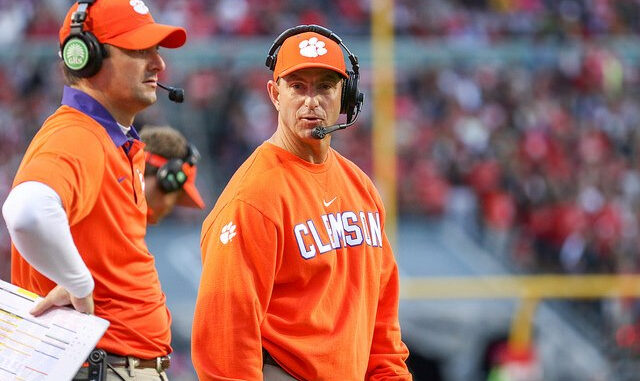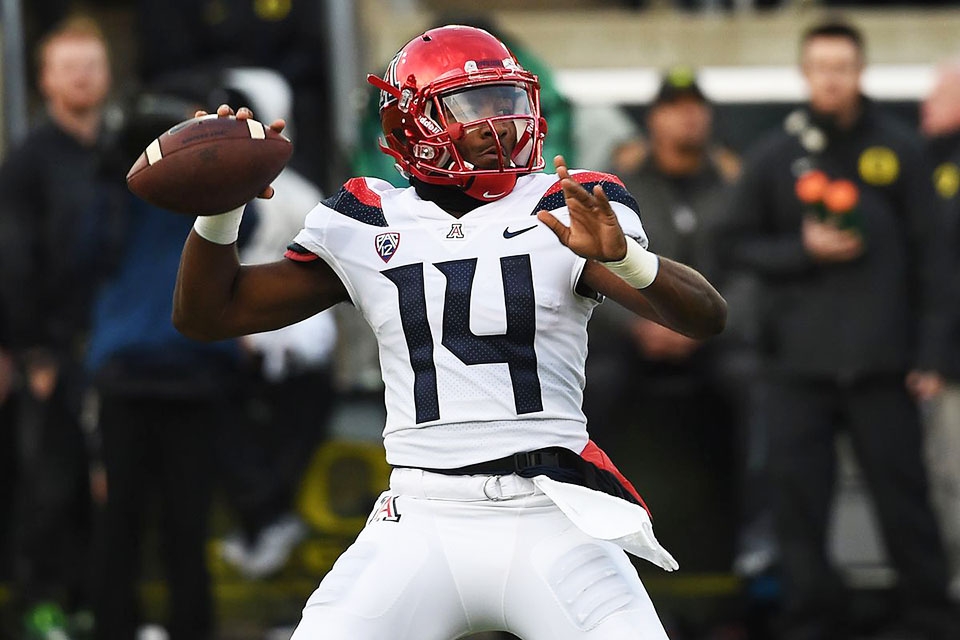
Spencer Thomas | Staff Writer
Nov. 4, 2021
It’s become cliché to say something like, “I wish there was a way to know that you’re in the good old days before they’re gone.” For college football fans, the 2021 season might be one of those moments.
Just 10 weeks in, the season has been loaded with unprecedented upsets, the awakening of blue-blood programs and the shocking disappointment of recent champions.
The Oregon Ducks stormed into Columbus and upset Ohio State, only to be the victim of an upset at the hands of Stanford several weeks later. Programs like Arkansas and Michigan State catapulted themselves from the bottom of their conferences to competing in top-10 games.
Meanwhile, Clemson is unranked for the first time since 2014 and LSU is at risk of failing to qualify for a bowl game just two years removed from winning a national championship.
You can’t miss a game because this year, more than ever, every game brings the possibility of having massive implications for the College Football Playoff.
The most-frequent complaint about the state of college football today is the lack of parity. That seems to have changed this year.
Gone are the days of monotonous renditions of the CFP with some combination of Alabama, Clemson, Oklahoma and a fourth team.
The current top 10 in the CFP rankings, which were released on Tuesday, include the likes of Cincinnati (No. 6) and Wake Forest (No. 9). Luke Fickell is hoping to help Cincinnati become the first-ever Group of Five team to earn a spot in the CFP, while Wake Forest is making its first-ever appearance in the top 10 of either the CFP rankings or the AP Top 25 Poll.
Even Nick Saban’s Alabama squad, arguably the most-consistent program in the entire country, has been part of a wild season. Their Oct. 9 loss to Texas A&M was the program’s first loss to an unranked opponent since George W. Bush was in office.
So far this year, no team has looked unbeatable. Fans can’t afford to miss a week, as every Saturday afternoon seems to bring some sort of surprise.
A new era of conference realignment is also set to embark on the sport. This summer, Texas and Oklahoma announced that they would soon depart from the Big 12 Conference and head to the Southeastern Conference. To replace them, the Big 12 has brought in BYU, Cincinnati, Houston and UCF, creating a domino effect down the structure of the sport’s landscape.
Once these changes go into effect, college football will be more consolidated than ever before. It’s unclear how that will change college football, but it will certainly be different from anything the sport has ever seen.
As money continues to change hands, future changes in the television market are also imminent. In 2023, ESPN will acquire the rights to televise the top SEC games. That means that ESPN will then hold rights to the best games from nearly every major conference. As great and powerful as the network is, a sport with 130 teams playing at the top level cannot be run under a monopoly like ESPN without some questions regarding that model’s sustainability.
Meanwhile, the CFP’s selection committee continues to entertain the idea of expanding the tournament. As much as a potential expansion (from four teams to eight teams, for example) opens the door for programs to compete at levels they had only dreamed of, it dilutes the importance of regular-season games by giving teams more room for error.
With these variables at play, college football will inevitably look entirely different in five years. While fans wait for the sport to sort itself out, they can only enjoy the product on display right now.
This year, that product is as magnificent as it’s been in a long time, and it should be appreciated while it lasts.



